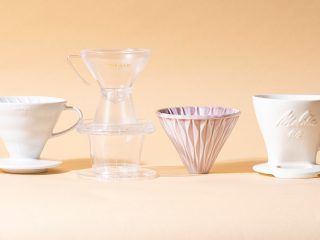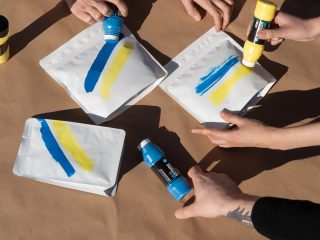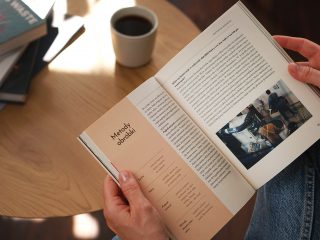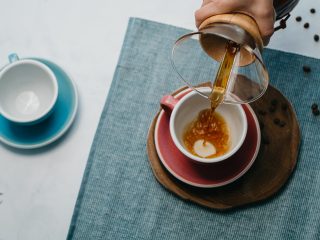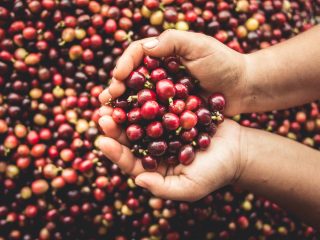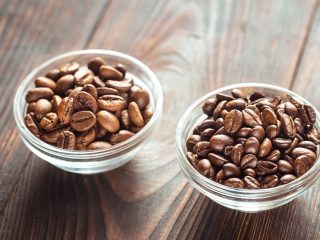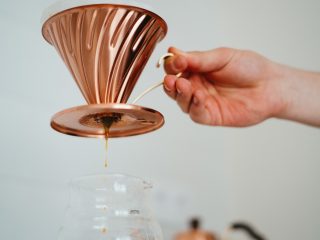Raisins, vanilla, gooseberry jam. The acidity of a lime, sweetness of honeydew honey and cocoa aftertaste. You find such or sometimes an even more sophisticated description on most speciality coffee packaging, while for you the brew is simply a bit acidic, and there is something else is going on there as well, which makes it quite good. No worries. There are ways to effectively develop sensory skills. And you don’t have to begin working at a coffee roastery to do that. However, as in the case of learning any skill – you need motivation, patience and diligence. If you already have this starter kit, let’s move forward.
However, first, we need to be very clear about one thing. Roasteries also sometimes get carried away. If you don’t perceive any evident notes of reduced pink guava in the cup, it is likely that the imagination of a marketing guy has got in the way. Flavour notes can be less or more marked, but it is best to use them simply as a reference point, a basis for flavour and aroma evaluation. Don’t worry if you don’t understand a word from the description on the packaging. Let’s keep things in perspective.
Eat and drink more consciously
On a day-to-day basis, people are not very good at concentrating. Plus the modern world doesn’t make it easy to relax. The rush, the haste, millions of messages coming at us from everywhere, emotional marketing… We have difficulty concentrating. The same goes for food. You eat while thinking what you will be doing in two hours. Or, even worse (but how typical), while scrolling through Facebook. In such conditions, it is impossible to appreciate what is on your plate. Mindful eating and drinking is not just a step towards mental well-being – it is a great sensory training.
Sensory skills are nothing more than using your memory. Whenever we are confronted with a given taste or smell stimulus, it automatically triggers memories. Which is why some smells, common in a given culture, are easily deciphered by most people within this culture. You don’t have to be a sommelier to accurately recognise the aroma of a freshly cut lemon which has been added to tea for generations. Often whenever we think about certain flavours, we are able to actually ‘smell’ them. But how many times have you smelled fresh wormwood? Do you know the taste of kiwano?
Concentration helps you to remember things. The more often you focus when experiencing flavours, the easier it will be for you to remember specific impressions and then recall them during next such experiments.
This can be easily applied to a coffee.
And then to the next and the next one!
Use the wheel!
Flavour wheels are a wonderful invention. They are used in many industries where flavours and aromas are important. The coffee industry uses a few flavour wheels, but I particularly like a brand new, upgraded wheel introduced recently by the Copenhagen company Coffee Mind:

When cupping or simply drinking coffee, try matching aromas to specific categories. At the beginning, focus on the aromas that are closer to the centre and don’t think about those farther outward. Is the aroma more fruity or perhaps rather pungent, more nutty or chocolate? Does the freshness of the aroma resemble more fruits or flowers? When you start feeling that you are getting better at it, time for the next step and trying to match specific notes – which is a much more demanding task. The aroma of lemon and that of lime can be confusingly similar; however, with some practice your nose will be able to detect the obvious differences. Drink all kinds of coffee, not only those processed your favourite way or coming from your favourite countries of origin. Diversity is key!
Drink blind
People like fooling themselves. They also like to fool themselves by thinking they are not fooling themselves. If you have already mastered all we have mentioned above, time for stepping out of your comfort zone. Keep trying coffees you are least familiar with. Or, even better, which you know absolutely nothing about. Ask the barista to wait before giving you the description. Place a cup of coffee in front of you and try identifying as many characteristics as possible. Then flip over the cards and compare them with your notes.
If you have more than one coffee packaging at home, do a blind test. Mark the cups, mix them up (or make somebody do it for you) and try matching the cup to its packaging.
Blind tests require more focus, and they push you to make real efforts when trying to make out flavours. This way, step by step, you will greatly improve your sensory skills. From here, you are not far from determining the part of the world where a given coffee comes from in just three sips.
Trainings and workshops
If you still want to find out even more about sensory science behind coffee, it is worthwhile to invest in knowledge, both theoretical and practical. Many coffee shops, roasteries or training companies organise sensory trainings and professional workshops at various levels. Taking part in a well-designed course encourages a valuable growth of skills. You are surrounded by professionals, most often along with other participants. Knowledge and experiences exchange, conversations about flavours, experiments – all these things can’t be replaced by lonely sessions at home. Take advantage of the services offered by the companies renowned in the industry. Look for authorised SCA trainers, certified by the Specialty Coffee Association, who teach according to modern, widely accepted standards. They are more and more numerous in Poland, in many major cities.
Learning about coffee has never been so professional and so easily accessible!






